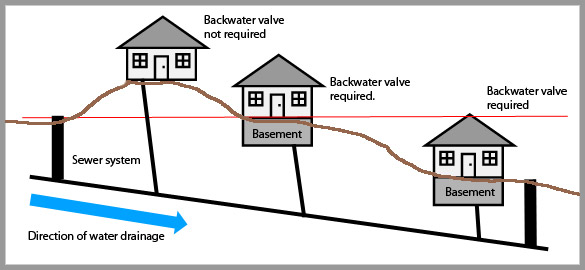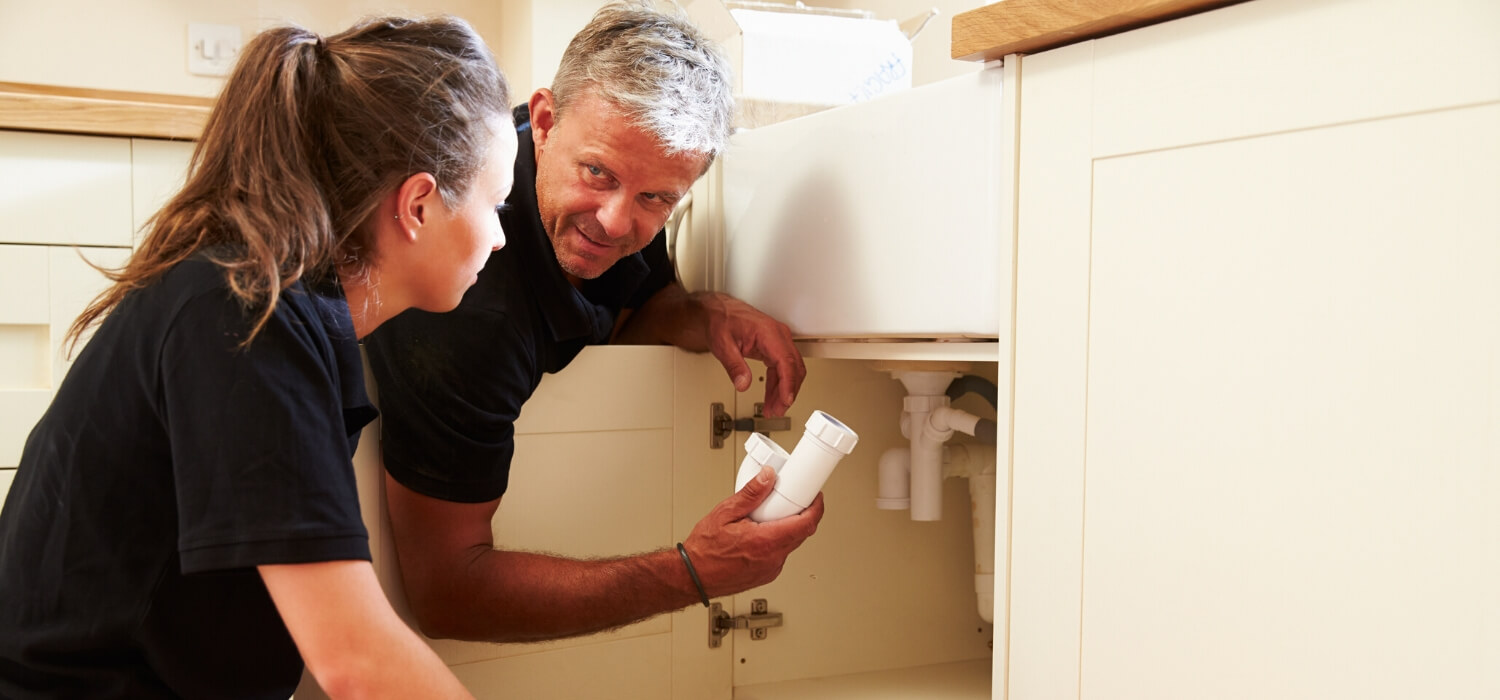What You Need to Know About Your House's Plumbing System Anatomy
What You Need to Know About Your House's Plumbing System Anatomy
Blog Article
We've noticed the article about Understanding Your Home's Plumbing Anatomy listed below on the internet and concluded it made good sense to write about it with you on my blog.

Comprehending exactly how your home's pipes system works is vital for every single home owner. From delivering clean water for drinking, cooking, and showering to securely eliminating wastewater, a well-maintained plumbing system is vital for your family members's health and wellness and convenience. In this comprehensive overview, we'll check out the intricate network that comprises your home's plumbing and deal pointers on upkeep, upgrades, and handling common issues.
Introduction
Your home's plumbing system is greater than simply a network of pipes; it's an intricate system that guarantees you have accessibility to clean water and effective wastewater removal. Understanding its components and how they interact can help you protect against expensive repair work and ensure every little thing runs efficiently.
Fundamental Components of a Pipes System
Pipelines and Tubing
At the heart of your pipes system are the pipes and tubes that bring water throughout your home. These can be constructed from numerous materials such as copper, PVC, or PEX, each with its benefits in terms of durability and cost-effectiveness.
Fixtures: Sinks, Toilets, Showers, and so on.
Fixtures like sinks, bathrooms, showers, and bathtubs are where water is utilized in your home. Comprehending just how these fixtures link to the plumbing system assists in identifying troubles and planning upgrades.
Shutoffs and Shut-off Points
Shutoffs regulate the flow of water in your pipes system. Shut-off valves are critical during emergency situations or when you need to make repair work, permitting you to separate parts of the system without interfering with water flow to the whole home.
Water System System
Main Water Line
The primary water line links your home to the metropolitan water or a private well. It's where water enters your home and is distributed to various fixtures.
Water Meter and Stress Regulatory Authority
The water meter procedures your water use, while a stress regulatory authority makes certain that water moves at a risk-free stress throughout your home's pipes system, protecting against damages to pipelines and components.
Cold Water vs. Warm water Lines
Recognizing the difference in between cold water lines, which provide water straight from the primary, and hot water lines, which bring heated water from the water heater, helps in troubleshooting and preparing for upgrades.
Water drainage System
Drain Pipes Pipes and Traps
Drain pipes bring wastewater far from sinks, showers, and bathrooms to the sewer or septic system. Catches avoid sewer gases from entering your home and likewise catch particles that can create obstructions.
Air flow Pipelines
Ventilation pipes enable air into the drain system, protecting against suction that can reduce drainage and cause traps to vacant. Correct air flow is important for preserving the stability of your pipes system.
Importance of Proper Water Drainage
Making certain correct water drainage protects against back-ups and water damages. Regularly cleaning drains and maintaining catches can stop costly repairs and expand the life of your pipes system.
Water Heating Unit
Kinds Of Water Heaters
Hot water heater can be tankless or traditional tank-style. Tankless heating units warm water on demand, while tanks store warmed water for prompt usage.
Updating Your Plumbing System
Factors for Updating
Updating to water-efficient fixtures or replacing old pipes can enhance water high quality, minimize water expenses, and enhance the value of your home.
Modern Pipes Technologies and Their Advantages
Check out innovations like smart leakage detectors, water-saving commodes, and energy-efficient water heaters that can conserve cash and decrease environmental impact.
Price Considerations and ROI
Compute the upfront costs versus lasting cost savings when thinking about plumbing upgrades. Several upgrades pay for themselves via minimized utility bills and less repair work.
Exactly How Water Heaters Link to the Plumbing System
Comprehending just how hot water heater connect to both the cold water supply and warm water distribution lines helps in detecting problems like insufficient warm water or leaks.
Upkeep Tips for Water Heaters
On a regular basis flushing your water heater to eliminate sediment, examining the temperature setups, and evaluating for leakages can expand its lifespan and enhance energy performance.
Common Pipes Issues
Leakages and Their Causes
Leakages can occur as a result of aging pipelines, loose fittings, or high water stress. Dealing with leakages quickly prevents water damages and mold and mildew growth.
Obstructions and Obstructions
Obstructions in drains and commodes are frequently brought on by flushing non-flushable things or a buildup of grease and hair. Making use of drainpipe screens and bearing in mind what goes down your drains can protect against blockages.
Indicators of Plumbing Issues to Expect
Low water stress, slow drains, foul odors, or uncommonly high water costs are signs of prospective pipes problems that should be attended to without delay.
Plumbing Upkeep Tips
Normal Inspections and Checks
Arrange yearly plumbing evaluations to capture concerns early. Look for signs of leaks, rust, or mineral build-up in faucets and showerheads.
DIY Maintenance Tasks
Easy jobs like cleansing faucet aerators, checking for bathroom leakages making use of dye tablets, or protecting revealed pipelines in cold climates can avoid major plumbing issues.
When to Call an Expert Plumbing Professional
Know when a plumbing issue needs expert experience. Trying intricate repairs without proper knowledge can result in even more damages and greater repair work expenses.
Tips for Minimizing Water Usage
Easy practices like repairing leaks immediately, taking much shorter showers, and running complete tons of washing and meals can save water and reduced your energy expenses.
Eco-Friendly Pipes Options
Think about lasting plumbing materials like bamboo for flooring, which is durable and green, or recycled glass for kitchen counters.
Emergency situation Readiness
Actions to Take Throughout a Pipes Emergency
Know where your shut-off valves are located and how to turn off the water supply in case of a burst pipe or significant leakage.
Relevance of Having Emergency Contacts Convenient
Keep contact information for neighborhood plumbing professionals or emergency situation services readily available for quick response during a pipes dilemma.
Environmental Impact and Conservation
Water-Saving Fixtures and Devices
Mounting low-flow taps, showerheads, and bathrooms can considerably reduce water use without sacrificing efficiency.
Do It Yourself Emergency Fixes (When Relevant).
Momentary fixes like using air duct tape to patch a leaking pipeline or putting a pail under a trickling tap can lessen damage until a specialist plumbing professional shows up.
Final thought.
Understanding the composition of your home's plumbing system encourages you to preserve it effectively, conserving time and money on repairs. By following regular upkeep routines and remaining informed concerning contemporary plumbing technologies, you can ensure your pipes system operates efficiently for many years ahead.
The Anatomy of Your Home s Plumbing System
Understanding the anatomy of your home s plumbing system is essential for any homeowner. It not only helps in identifying potential issues but also facilitates effective communication with professionals when repairs or upgrades are needed. Your home s plumbing system is more than just pipes and faucets; it s a complex network that ensures the efficient and hygienic flow of water in and out of your house. In this blog, we ll dissect the crucial components of your home s plumbing system. For those in Antelope Valley, Brock Plumbing is your trusted partner for all your plumbing needs, ensuring your system functions smoothly and efficiently.
Water Supply System
Main Water Line: This is where your home s plumbing system begins. The main water line connects your home to the public water supply or a private well. Pipes and Shut-off Valves: Pipes distribute water throughout your home. Shut-off valves are crucial for controlling the flow of water and making repairs without shutting off the entire system. Drainage System
Drain Pipes: These pipes carry waste and water away from sinks, toilets, and showers. Vents: Vents allow sewer gases to escape and help maintain proper pressure in the drainage pipes, ensuring efficient flow of wastewater. Traps: Every fixture has a trap, a U-shaped pipe that holds water and prevents sewer gases from entering your home. The most common is the P-trap under sinks. Fixtures and Appliances
Fixtures and appliances are the most interacted with parts of your plumbing system. They include sinks, toilets, showers, dishwashers, and washing machines. Each fixture and appliance has its own supply and drainage connection, ensuring they receive clean water and can dispose of wastewater effectively.
Water Heating System
Your water heater is a crucial component, providing hot water to various fixtures and appliances in your home. It can be tank-based or tankless, with each type having its own set of advantages and maintenance requirements. Regular maintenance is essential to ensure efficient operation and extend the lifespan of the unit.
Sump Pump
In areas prone to flooding or with high water tables, a sump pump is an essential part of the plumbing system. It s installed in the lowest part of your basement or crawlspace and pumps out water that accumulates, preventing flooding and protecting your home from water damage.
Septic System
Homes that are not connected to a municipal sewer system have a septic system and an underground wastewater treatment structure. Understanding how to maintain your septic system is crucial to prevent backups, odors, and early system failure.
Conclusion
Your home s plumbing system is a complex and essential network, ensuring the efficient and hygienic flow of water in and out of your property. Understanding its key components helps in maintaining it properly and identifying issues before they escalate into major problems. For residents in Antelope Valley, Brock Plumbing is dedicated to providing top-notch services, ensuring that every part of your plumbing system is in perfect working order. Trust our team of professionals to handle all your plumbing needs, ensuring your home remains comfortable, safe, and well-maintained.
https://brockplumbinganddrains.com/blog/the-anatomy-of-your-homes-plumbing-system/

I hope you enjoyed our topic about Anatomy of a House: Understanding the Components. Thank you for taking a few minutes to browse our blog post. Liked our write up? Please share it. Let others check it out. We recognize the value of your readership.
Get A Free Estimate Report this page